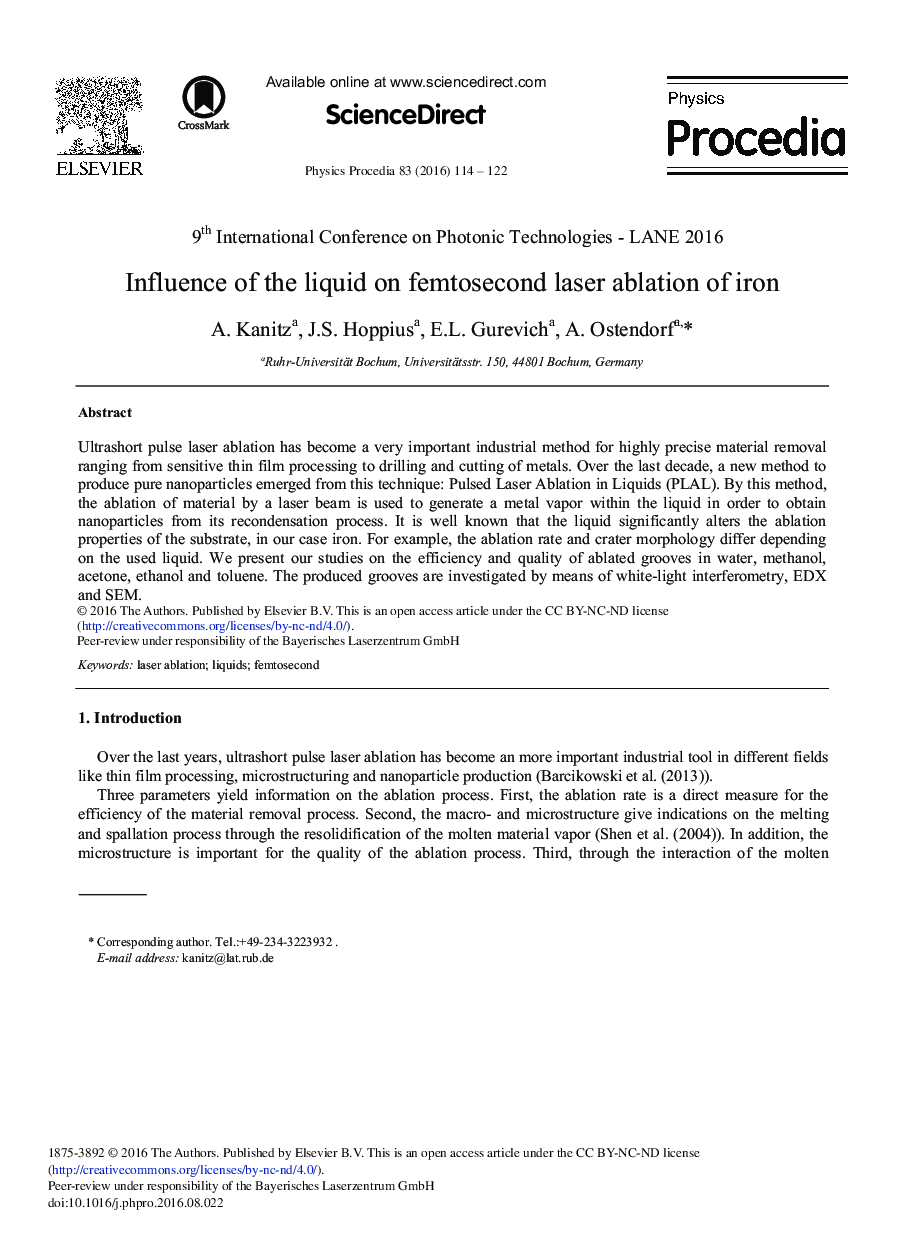| Article ID | Journal | Published Year | Pages | File Type |
|---|---|---|---|---|
| 5497341 | Physics Procedia | 2016 | 9 Pages |
Abstract
Ultrashort pulse laser ablation has become a very important industrial method for highly precise material removal ranging from sensitive thin film processing to drilling and cutting of metals. Over the last decade, a new method to produce pure nanoparticles emerged from this technique: Pulsed Laser Ablation in Liquids (PLAL). By this method, the ablation of material by a laser beam is used to generate a metal vapor within the liquid in order to obtain nanoparticles from its recondensation process. It is well known that the liquid significantly alters the ablation properties of the substrate, in our case iron. For example, the ablation rate and crater morphology differ depending on the used liquid. We present our studies on the efficiency and quality of ablated grooves in water, methanol, acetone, ethanol and toluene. The produced grooves are investigated by means of white-light interferometry, EDX and SEM.
Keywords
Related Topics
Physical Sciences and Engineering
Physics and Astronomy
Physics and Astronomy (General)
Authors
A. Kanitz, J.S. Hoppius, E.L. Gurevich, A. Ostendorf,
